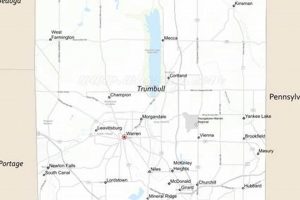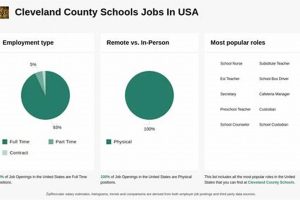This legal case involves a student’s First Amendment rights regarding off-campus, online speech that allegedly threatened school officials. The litigation centered on whether the school board’s disciplinary actions, based on the student’s rap song posted on Facebook and YouTube, violated his right to free expression. The song, while containing violent lyrics and naming specific coaches, was created and shared outside of school hours and property.
The case significantly impacted the evolving understanding of schools’ jurisdiction over student speech in the digital age. It raised crucial questions about the balance between protecting student free speech and ensuring a safe and orderly school environment. The outcome influenced subsequent discussions and rulings regarding online speech and its potential consequences for students, highlighting the complex intersection of constitutional rights and educational policies within the context of online platforms.
This article will further explore the background, legal arguments, court decisions, and lasting implications of this pivotal case. It will also analyze the broader context of student speech rights and the ongoing challenges presented by the rapid evolution of online communication technologies.
Understanding Off-Campus Online Speech and School Jurisdiction
The case involving the Itawamba County School Board offers valuable insights for students, parents, educators, and administrators navigating the complex landscape of online speech and its potential impact on school environments. The following tips provide guidance based on the issues raised by this important case:
Tip 1: Understand the Limits of Free Speech: While free speech is a fundamental right, it is not absolute. Speech that poses a true threat, incites violence, or substantially disrupts the educational process may not be protected, even if it originates off-campus.
Tip 2: Consider the Context of Online Speech: The online environment can blur the lines between private and public expression. Content shared online, even with limited visibility, can quickly spread and reach a wider audience, including school officials.
Tip 3: Exercise Caution When Naming Individuals: Online posts that target specific individuals, especially school staff, with accusatory or threatening language, can be viewed as disruptive and may lead to disciplinary action.
Tip 4: Review School Policies Regarding Online Conduct: Familiarize yourself with school handbooks and policies that address online speech and behavior. Understanding these policies is essential for both students and parents.
Tip 5: Seek Legal Counsel When Necessary: If facing disciplinary action related to online speech, consulting with an attorney who specializes in student rights can provide valuable guidance and ensure due process is followed.
Tip 6: Engage in Open Communication: Schools should strive to maintain open communication with students and parents about expectations regarding online behavior and the potential consequences of inappropriate online expression.
Tip 7: Promote Responsible Digital Citizenship: Educators and parents have a shared responsibility to guide young people toward responsible online behavior and ethical communication practices.
By understanding the complex interplay between free speech rights and school safety, all stakeholders can contribute to a more informed and responsible online environment for students.
This case serves as a crucial reminder of the evolving legal landscape surrounding online speech and the importance of balancing constitutional rights with the need to maintain safe and supportive learning environments. Further discussion and analysis are essential for adapting to the challenges and opportunities presented by the digital age.
1. Off-campus Speech
Off-campus speech played a central role in Bell v. Itawamba County School Board, raising critical questions about the extent to which schools can regulate student expression that originates outside the school environment. The case stemmed from a student’s creation and dissemination of a rap song containing allegedly threatening lyrics about school coaches. Crucially, this creation and distribution occurred off school grounds and outside of school hours, utilizing online platforms like Facebook and YouTube. This off-campus origin significantly shaped the legal arguments and subsequent court decisions.
The core issue revolved around whether the school board’s disciplinary actions violated the student’s First Amendment rights. Proponents of the student’s position argued that off-campus speech, absent a direct and substantial disruption to the school environment, should remain protected. They contended that extending school authority to regulate off-campus expression could chill student speech and unduly restrict protected expression. Conversely, the school board argued that the song’s content, despite its off-campus origin, posed a credible threat to school officials and disrupted the educational environment, justifying intervention.
This case highlights the complex interplay between free speech rights and school safety in the digital age. It underscores the challenges of applying traditional legal frameworks to online expression, where content created off-campus can quickly spread and impact the school community. The court decisions in Bell offer important legal precedents for navigating similar situations, emphasizing the need to carefully balance student expressive rights with the maintenance of a safe and orderly learning environment. The case ultimately serves as a touchstone for ongoing discussions regarding off-campus speech, online platforms, and their intersection with school authority.
2. Online Threat
The concept of an “online threat” played a pivotal role in Bell v. Itawamba County School Board, shaping the legal arguments and the court’s ultimate decision. The case grappled with the question of whether the student’s rap song, disseminated online, constituted a true threat and thus fell outside the protection of the First Amendment. This exploration delves into the facets of “online threat” as they pertain to this landmark case.
- Context and Interpretation:
Determining whether online content constitutes a true threat requires careful consideration of context. Factors such as the language used, the target audience, the surrounding circumstances, and the speaker’s intent all contribute to the analysis. In Bell, the court weighed the student’s artistic expression within the rap song against the potential for the lyrics to be perceived as a genuine threat toward school officials.
- Perception of the Recipient:
The subjective perception of the recipient of the alleged online threat plays a crucial role. Even if the speaker did not intend to convey a threat, if a reasonable person could interpret the communication as such, it could be deemed a true threat. The perceived threat to the coaches named in the student’s rap song was a key factor considered by the school board and the courts.
- Off-Campus Speech and School Jurisdiction:
Bell raised complex questions regarding the extent of a school’s jurisdiction over off-campus online speech. While schools have an interest in maintaining a safe and orderly learning environment, their authority to regulate student speech outside of school is not unlimited. The court had to determine whether the online threat, originating off-campus, posed a sufficient disruption to justify school intervention.
- Balancing Free Speech and Safety:
The case presented a challenging balancing act between protecting students’ First Amendment rights and ensuring the safety and security of the school community. The court had to weigh the student’s right to express himself online against the potential for harm caused by the perceived threat. This balancing act remains a central challenge in cases involving online speech and school discipline.
The “online threat” in Bell wasn’t merely about the words themselves but also about the context, the perception of those targeted, and the intersection of off-campus speech with school authority. This case continues to inform the ongoing discussion surrounding online expression, student rights, and school safety in the digital age. It underscores the need for careful consideration of all facets of online communication when assessing potential threats and their impact on the educational environment.
3. Student Discipline
Bell v. Itawamba County School Board significantly impacted the landscape of student discipline, particularly concerning off-campus online speech. The case highlighted the tension between a school’s responsibility to maintain order and safety and a student’s First Amendment rights. The student’s disciplinary actionsuspensionfor creating and sharing a rap song containing allegedly threatening lyrics, even though created off-campus, sparked a debate about the reach of school authority in the digital age. This case questioned the traditional boundaries of student discipline, forcing a reconsideration of where school jurisdiction begins and ends in the context of online expression.
Before Bell, school disciplinary actions primarily focused on on-campus behavior. This case, however, demonstrated that online activity, even if originating off-campus, could be subject to school discipline if deemed disruptive or threatening to the school environment. The decision underscored the potential for online speech to transcend geographical limitations and directly impact the school community. For instance, a threatening post made on social media, even outside of school hours, could reasonably create fear and disruption within the school, justifying disciplinary intervention. This expanded scope of student discipline necessitates clearer guidelines regarding online behavior and its potential consequences.
Bell compels a deeper examination of the complexities of student discipline in the digital era. It necessitates a careful balancing act between protecting students’ constitutional rights and ensuring a safe and orderly learning environment. Schools must grapple with defining the limits of their authority over off-campus online speech, developing clear policies that address online behavior, and ensuring due process for students facing disciplinary action. The case serves as a crucial precedent, reminding schools of the need for nuanced approaches to student discipline that address the unique challenges posed by the ever-evolving online landscape. Furthermore, it emphasizes the importance of educating students about responsible online conduct and the potential repercussions of their digital footprint.
4. First Amendment
Bell v. Itawamba County School Board stands as a significant case exploring the intersection of student speech rights and school authority under the First Amendment. The case centered on a student’s creation and online dissemination of a rap song, containing lyrics perceived as threatening towards school officials. This action, though occurring off-campus, led to disciplinary action by the school board, raising the crucial question of whether such discipline violated the student’s First Amendment right to free speech. The case challenged traditional understandings of school jurisdiction over student expression, particularly in the context of online platforms and off-campus activity. It brought into sharp focus the tension between protecting student speech and maintaining a safe and orderly learning environment.
The First Amendment’s protection of speech, while broad, is not absolute. Courts have recognized that schools have a compelling interest in preventing disruption and ensuring safety within the school environment. Tinker v. Des Moines Independent Community School District (1969), a landmark Supreme Court case, established that student speech can be restricted if it substantially disrupts the educational process. Bell, however, presented a more nuanced scenario: the speech occurred off-campus and online. The court had to grapple with whether and how the Tinker standard applied to this new context. The case explored the extent to which off-campus speech, particularly online, could be considered disruptive to the school environment, thus potentially justifying limitations on a students First Amendment rights. The central question revolved around whether the student’s rap song posed a true threat to school officials and created a substantial disruption, or whether it was protected expression under the First Amendment.
Bell v. Itawamba County School Board highlights the ongoing challenge of applying First Amendment principles to student speech in the digital age. The case demonstrates that the lines between on-campus and off-campus speech are increasingly blurred, particularly with the pervasive nature of online platforms. It underscores the need for schools to carefully consider the implications of disciplining students for off-campus speech, ensuring that any such actions are narrowly tailored to address legitimate concerns about safety and disruption. The case serves as a pivotal point in the continuing evolution of student speech rights in the context of online expression, reminding us of the delicate balance required between protecting free speech and maintaining a safe and orderly learning environment.
5. School Jurisdiction
Bell v. Itawamba County School Board significantly challenged traditional notions of school jurisdiction, particularly concerning student speech occurring off-campus. The case, involving a student disciplined for a rap song created and shared online outside of school, forced courts to grapple with the extent to which a school’s authority extends beyond its physical boundaries and into the digital realm. The student’s argument centered on the fact that the speech occurred off-campus and therefore fell outside the school’s jurisdiction. The school board, however, argued that the online nature of the speech, coupled with its content deemed threatening towards school officials, justified intervention despite its off-campus origin. This clash of perspectives highlighted the evolving challenges of defining school jurisdiction in the age of the internet.
The case raised complex legal questions about the limits of school authority. While schools possess a recognized responsibility to maintain a safe and orderly learning environment, the extent to which this responsibility allows for regulation of off-campus speech, especially online, remained unclear before Bell. The court’s decision in Bell provided crucial guidance, albeit not without controversy. The case acknowledged the potential for off-campus online speech to disrupt the school environment and thus fall under school jurisdiction. This established an important precedent for future cases involving student online expression, though it also raised concerns about potential overreach by schools into students’ private lives. Practical implications include the need for schools to develop clear policies regarding online speech and for students to understand the potential consequences of their online actions, even when occurring off-campus.
Bell v. Itawamba County School Board serves as a landmark case in defining the evolving nature of school jurisdiction in the digital age. It acknowledges the interconnectedness of online and offline worlds, recognizing that off-campus speech can have significant on-campus consequences. The case underscores the need for a careful balancing act between protecting student speech rights and ensuring a safe and productive learning environment. It also highlights the ongoing challenge of adapting legal frameworks to the rapidly evolving landscape of online communication, prompting schools and courts to continually re-evaluate the boundaries of school jurisdiction in the digital realm.
6. Rap Song Controversy
The rap song controversy lies at the heart of Bell v. Itawamba County School Board, serving as the catalyst for the legal dispute and highlighting the complexities of student speech in the digital age. The controversy stemmed from a student’s creation and online dissemination of a rap song containing lyrics perceived as threatening towards school coaches. This artistic expression, shared via social media platforms outside of school hours and property, became the focal point of the case, raising questions about the extent of school jurisdiction over off-campus online speech and the balance between First Amendment rights and school safety. The song itself, while arguably containing violent and aggressive language, was considered by the student to be a form of artistic expression and social commentary. This difference in interpretation between the student’s artistic intent and the school’s perception of a threat underscores the challenges of regulating student speech, particularly in the context of artistic mediums like rap music, often characterized by strong language and imagery.
The controversy ignited a debate about the appropriate response to student speech that, while originating off-campus, could potentially disrupt the school environment. The school board’s decision to discipline the student for the song’s content raised concerns about the chilling effect such actions might have on student expression. Critics argued that punishing students for off-campus speech could stifle creativity and limit important dialogue on social issues. Conversely, proponents of the school board’s decision emphasized the need to protect school staff from perceived threats and maintain a safe and orderly learning environment. The case highlighted the difficulty in balancing these competing interests, particularly in the context of online platforms where content can quickly spread and reach a wide audience.
The rap song controversy in Bell underscores the evolving challenges faced by schools in regulating student speech in the digital age. The case serves as a cautionary tale, illustrating the potential for online expression, even when created off-campus, to have significant repercussions. It compels further discussion on the appropriate boundaries of school jurisdiction, the need for clear policies regarding online speech, and the importance of protecting student First Amendment rights while ensuring school safety. The case also emphasizes the need for greater understanding and dialogue surrounding different forms of artistic expression, particularly those originating from marginalized communities, and their potential impact on the educational environment.
7. Social media's role
Bell v. Itawamba County School Board highlighted the increasingly significant role of social media in student speech cases. The case revolved around a student’s rap song posted on Facebook and YouTube, platforms that facilitated widespread dissemination of the allegedly threatening lyrics. This case underscored the unique challenges social media presents to schools attempting to regulate student speech occurring off-campus. The rapid and far-reaching nature of online communication blurs the lines between private expression and public dissemination, forcing a re-evaluation of traditional jurisdictional boundaries and free speech principles.
- Amplified Reach and Permanence:
Social media platforms amplify the reach and permanence of student speech. Unlike private conversations, online posts can be shared, reshared, and accessed by a vast audience, including unintended recipients. This magnified reach significantly alters the potential impact of student expression, making seemingly private statements publicly accessible and potentially disruptive to the school environment. The case demonstrated how quickly online content can spread and potentially impact a school community, regardless of where it originated.
- Context Collapse:
Social media platforms often collapse various contexts, bringing together different audiences who might interpret the same content in vastly different ways. A message intended for a small group of friends can easily reach a broader audience, including school officials, parents, and the wider community. This context collapse can lead to misinterpretations and unintended consequences, as seen in Bell where the students rap song, potentially intended for a specific audience, reached school officials who interpreted it as a threat.
- Erosion of Traditional Boundaries:
Social media erodes traditional boundaries between school and the outside world. Off-campus speech, once largely beyond the reach of school authority, can now easily enter the school environment through online platforms. This interconnectedness challenges established notions of school jurisdiction, forcing courts and educators to grapple with new questions regarding the extent to which schools can regulate off-campus online expression. Bell directly addressed this challenge, highlighting the difficulty of separating on-campus and off-campus speech in the digital age.
- Evidentiary Challenges:
Social media presents unique evidentiary challenges in student speech cases. Screenshots, shares, and comments can be easily manipulated or taken out of context. Determining the authenticity and intent behind online content requires careful consideration of the platform’s dynamics, including privacy settings, audience, and the potential for manipulation. Bell exemplified these challenges, as the court had to assess the context and intent of the students online expression based on the available digital evidence.
Bell v. Itawamba County School Board serves as a pivotal case in understanding the implications of social media for student speech and school discipline. It highlights the need for schools to adapt their policies and practices to address the unique challenges posed by online platforms, balancing student rights with the need to maintain a safe and orderly learning environment. The case underscores the ongoing evolution of legal and social understandings of free speech in the digital age, urging a nuanced approach that recognizes the transformative role of social media in student expression.
Frequently Asked Questions
This section addresses common questions surrounding the implications of Bell v. Itawamba County School Board for student speech, school authority, and online expression. Understanding these frequently asked questions offers valuable insights for students, parents, educators, and legal professionals navigating the complex landscape of student rights in the digital age.
Question 1: Does Bell v. Itawamba mean schools can discipline students for anything they post online?
No. Schools can only discipline students for off-campus online speech if it causes a substantial disruption to the learning environment or poses a true threat to the safety of students or staff. Simply expressing unpopular or controversial viewpoints online is not grounds for disciplinary action.
Question 2: How is “substantial disruption” determined in these cases?
Determining substantial disruption requires a fact-specific inquiry considering the context of the speech, its potential impact on school activities, and the reactions of other students and staff. A single offensive post might not constitute substantial disruption, whereas a coordinated online campaign targeting specific individuals could.
Question 3: What constitutes a “true threat” in the context of online student speech?
A true threat is a statement that a reasonable person would interpret as a serious expression of an intent to inflict harm. It goes beyond mere hyperbole or venting frustration. The context, including the speaker’s intent and the recipient’s perception, are essential factors in determining whether a statement constitutes a true threat.
Question 4: Do schools need to have specific policies about online speech to discipline students?
While not strictly required, having clear and well-publicized policies regarding online speech can help avoid confusion and ensure that disciplinary actions are consistent and fair. These policies should outline expectations for student behavior online, define prohibited conduct, and explain the process for addressing violations.
Question 5: How does Bell affect students’ First Amendment rights?
Bell clarifies that students’ First Amendment rights are not absolute, especially when online speech substantially disrupts the school environment or poses a true threat. However, the case also emphasizes the need for schools to carefully balance their interest in maintaining order with students’ right to express themselves.
Question 6: What can students do if they believe their school has unfairly disciplined them for online speech?
Students who believe they have been unfairly disciplined should consult with their parents/guardians and consider seeking legal advice. Due process protections apply to student disciplinary proceedings, and students have the right to challenge disciplinary actions they believe are unwarranted.
The legal landscape surrounding student speech, particularly in the online context, continues to evolve. Staying informed about relevant court decisions and school policies is crucial for protecting student rights and ensuring safe and supportive learning environments.
Further analysis will delve deeper into specific aspects of the case, examining its broader implications for educational policy and student advocacy.
Conclusion
Bell v. Itawamba County School Board serves as a critical examination of student speech rights in the digital age. This exploration has analyzed the complexities of the case, focusing on the intersection of off-campus online expression, perceived threats, and school jurisdiction. The case highlights the challenges faced by schools in balancing their responsibility to maintain a safe learning environment with students’ First Amendment rights. The controversy surrounding the student’s rap song, the role of social media in amplifying its reach, and the subsequent legal battles underscore the evolving nature of student discipline and the need for clear guidelines regarding online behavior. The analysis has emphasized the significance of Bell as a legal precedent, shaping future discussions about student speech, school authority, and the ever-expanding digital landscape.
The implications of Bell v. Itawamba County School Board extend far beyond the specific individuals involved. This case presents a crucial opportunity for ongoing dialogue among educators, legal professionals, students, and parents regarding the appropriate boundaries of school discipline in the context of online expression. As technology continues to evolve and reshape communication patterns, a continued examination of legal frameworks and educational policies is essential to ensure the protection of both student rights and school safety. This case serves as a stark reminder of the ongoing need for thoughtful consideration, clear communication, and a commitment to fostering responsible digital citizenship among students. The legal and social discussions sparked by Bell will undoubtedly shape the future landscape of student speech rights and online expression in the years to come.







